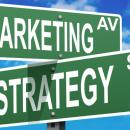Question 1
1) The President/CEO of Decision Analyst states that his company:
![]() A) seldom, if ever, uses secondary data research. It is a primary data firm
A) seldom, if ever, uses secondary data research. It is a primary data firm![]() B) conducts experiments which do not require secondary data
B) conducts experiments which do not require secondary data![]() C) specialize in its own consumer panels so there is no need for access to secondary data
C) specialize in its own consumer panels so there is no need for access to secondary data![]() D) makes certain that it is aware of existing information about an industry, a product category and the client company before research objectives for a project are decided on
D) makes certain that it is aware of existing information about an industry, a product category and the client company before research objectives for a project are decided on![]() E) does not use secondary data because they are usually from untrustworthy sources and they are dated
E) does not use secondary data because they are usually from untrustworthy sources and they are dated
Question 2
2) When it is determined that the research project will require primary data, secondary data should:
![]() A) be discarded
A) be discarded![]() B) not be collected as it will be a waste of resources
B) not be collected as it will be a waste of resources![]() C) be consulted anyway
C) be consulted anyway![]() D) be utilized only if it conforms to the findings contained in the primary data
D) be utilized only if it conforms to the findings contained in the primary data![]() E) be used only in cases where the primary data is not gathered using accepted industry standards
E) be used only in cases where the primary data is not gathered using accepted industry standards
Question 3
6) Which of the following represents an application of secondary data?
![]() A) predicting broad changes in culture
A) predicting broad changes in culture![]() B) selecting a street location for a new car wash
B) selecting a street location for a new car wash![]() C) economic trends forecasting
C) economic trends forecasting![]() D) corporate intelligence
D) corporate intelligence![]() E) All of the above are applications of secondary data.
E) All of the above are applications of secondary data.
Question 4
23) A study is released that shows that a majority of Americans want to keep the penny in circulation. It is learned that the study was conducted by the zinc industry (most pennies are made with zinc). This illustrates:
![]() A) there are ethical issues in secondary data; some secondary data are not objective
A) there are ethical issues in secondary data; some secondary data are not objective![]() B) it is difficult to conduct accurate research when you are dealing with emotional issues such as keeping the penny in circulation
B) it is difficult to conduct accurate research when you are dealing with emotional issues such as keeping the penny in circulation![]() C) even though the study was sponsored by the zinc industry, the research company conducting the research would not be unethical in reporting the data
C) even though the study was sponsored by the zinc industry, the research company conducting the research would not be unethical in reporting the data![]() D) research results may be used to determine national policy
D) research results may be used to determine national policy![]() E) the FTC protects the public from manipulations of fact
E) the FTC protects the public from manipulations of fact
Question 5
24) When two or more secondary sources provide conflicting information, you should:
![]() A) select the one source that has been in business the longest
A) select the one source that has been in business the longest![]() B) evaluate the information from each source and select the source that best suits your needs for reliable and valid information
B) evaluate the information from each source and select the source that best suits your needs for reliable and valid information![]() C) probably abandon the project if there is conflicting information; you will never have objective results upon which to base your decision
C) probably abandon the project if there is conflicting information; you will never have objective results upon which to base your decision![]() D) call the client/manager and ask which source is desired
D) call the client/manager and ask which source is desired![]() E) report the discrepancies immediately to the two sources
E) report the discrepancies immediately to the two sources
Question 6
44) Secondary data refers to information that is developed or gathered by the researcher specifically for the research project at hand.
![]() TRUE
TRUE![]() FALSE
FALSE
Question 7
46) Although there are many sources of secondary data, USES of secondary data are limited to only four or five applications at most.
![]() TRUE
TRUE![]() FALSE
FALSE
Question 8
53) Data mining is the name for software that is now available to help managers make sense out of seemingly senseless masses of information contained in databases.
![]() TRUE
TRUE![]() FALSE
FALSE











Comments